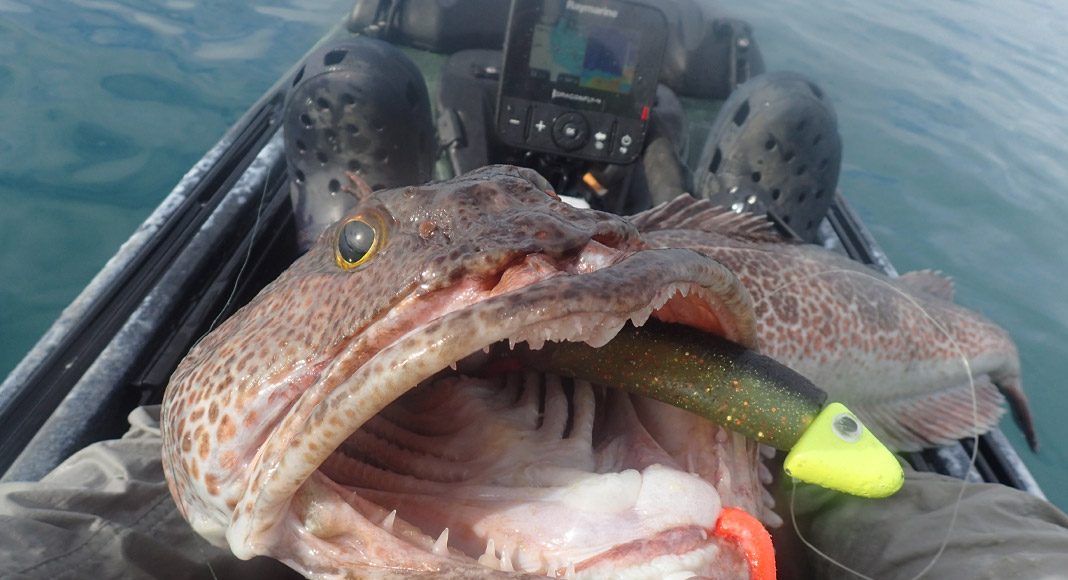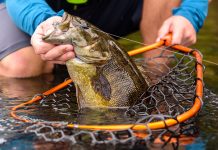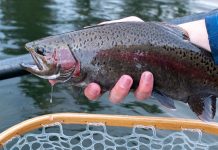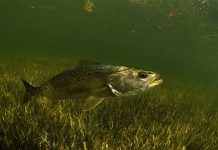From Baja, California to Alaska’s Aleutian Islands, lingcod provide kayak anglers an opportunity to experience an exhilarating fight and score great table fare. The fish are more prevalent along the northern stretch of their range, and my hometown in Northern California puts me in the center of the action.
My favorite thing about lingcod fishing is the simplicity. If the season is open, then odds are I will catch dinner. And there’s always a chance of landing a trophy ling over 50 pounds.
I launch at a local beach or even lower my kayak down a cliff. The fish live in 20 to 150 feet of water, so the paddle isn’t usually far. It is important to fish over rocks, not sand. When I bounce my lure, I can feel the composition of the bottom through my fishing line.
Lingcod like hiding on the face of a drop, but they will venture onto rocky flats to search the reef for a meal. I always make a drop on bait marks to see if a lingcod is waiting below.
We don’t get many bluebird days on the Pacific Ocean, but I think a little swell and some wind actually make the fish hungry. Avoid fishing on a south wind. For some reason, I never catch lingcod on a south wind.
Lingcod fishing involves bouncing a bait or lure along the bottom. I spend a lot of time cranking and jigging, so comfort and ergonomics are a key consideration in choosing my rod and reel combo. I like a large, low-profile Daiwa Lexa HD 300 reel matched to a medium-heavy Shimano Trevala rod. The setup is super light, but the Lexa HD reel can still produce 22 pounds of drag to pull a trophy ling off the bottom.

Lingcod are voracious feeders, I’ve caught them on homemade jigs and even a butterknife with a treble hook. My favorite lure is a four- to six-ounce P-Line Laser Minnow.
I also like to drag a six-inch Big Hammer Senorita swimbait coated in squid- or sardine-flavored Pro-Cure gel. Best colors feature a dark back and light belly. Ling can be picky, so I change colors until I find their favorite.
I will also catch lingcod on dead bait. I hook a whole squid on a dropper rig with a 6/0 hook and eight-ounce sinker. If I catch a lingcod and it regurgitates an octopus, I’ll put the eight-legged bait on the hook and send it down.
Live bait is fun, but a little more challenging. First, I catch sea trout or small rockfish with shrimp flies on a bottomrig. When I get a livie, I remove the rubber tail from my leadhead and hook the bait so it won’t come off.
Having a secure hook set is important because lingcod often grab the bait without getting the hook. Lingcod are so stubborn, they will bite a bait and not let go. Many times, I will catch a smaller lingcod with a larger fish latched on.
This possibility makes a good net one of the most important lingcod accessories. I use the largest net I can fit on my kayak. I also carry a set of fish grippers to handle the lingcod beside the boat.
Before I bring a keeper onboard, I whack it with a club and then cut out the gills to let the fish bleed out. Finally, I store my catch on ice in a small cooler in my tankwell. Dinner is served.
This article was first published in Kayak Angler Issue 43. Subscribe to Kayak Angler’s print and digital editions here, or browse the archives here.
A face only an angler could love. | Photo: Kevin Hofer






